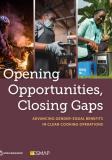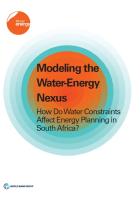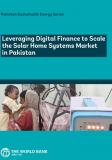Publications
This research focuses on incorporating a representation of water supply and infrastructure costs into an energy systems model (SATIM-W) to better reflect the interdependent nature of the energy-water nexus in South Africa and the water supply challenges facing the energy system. The research methodology developed embeds the various water supply options in a least cost optimization energy planning tool, so that the cost of water is captured. A key feature of the developed SATIM-W model is that it regionalizes power generaation, refining, and energy resource supply, thereby introducing a spatial dimension to the water demands of the energy sector. It also contains a regionalized structure of the basins and delivery infrastructure that would be required to supply the energy sector and assesses the impact of meeting those needs on the cost of supplying water.
World Bank. 2017. Modeling the Water-Energy Nexus: How Do Water Constraints Affect Energy Planning in South Africa? Washington, D.C.: World Bank Group. http://documents.worldbank.org/curated/en/706861489168821945/Modeling-the-water-energy-nexus-how-do-water-constraints-affect-energy-planning-in-South-Africa


